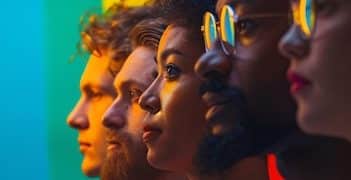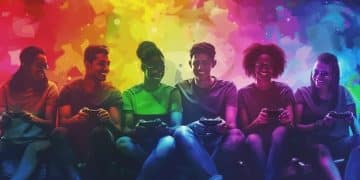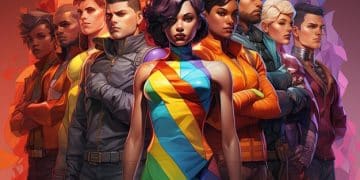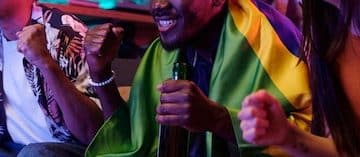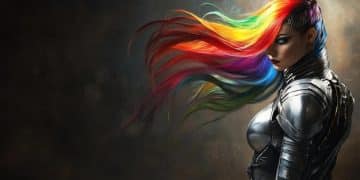LGBT Representation in League of Legends: Impact and Analysis in the US
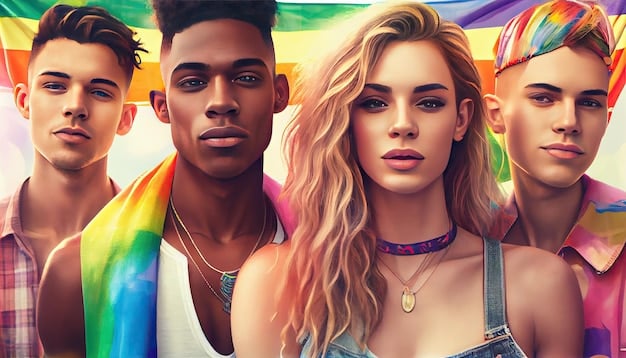
Analyzing the representation of LGBT characters in League of Legends lore reveals a significant impact on the US gaming community, fostering inclusivity but also sparking debates about authenticity and representation quality.
Analyzing the representation of LGBT characters in League of Legends lore and their impact on the community in the US showcases a community’s embrace of diversity within the game, driving conversations about authenticity and meaningful inclusion. This article digs into how representations shape perceptions and overall engagement.
The Evolution of LGBT Characters in League of Legends
League of Legends has increasingly embraced character diversity, including representation of LGBT individuals. Examining this evolution offers insights into how the game reflects and shapes sociocultural norms within its vibrant community.
Understanding the history and context is crucial for assessing current representations and their impacts.
Early Stages of Representation
Initially, any representation of LGBT characters was subtle or implied, leading to fan speculation and theories rather than overt acknowledgment.
These early interpretations were heavily fan-driven, highlighting a desire for more explicit representation despite the lack of direct affirmations.
- Subtle Cues: Characters behaviors or relationships could suggest non-heteronormative identities but were not explicitly addressed.
- Fan Theories: The community actively engaged in ‘headcanons’ interpreting characters through an LGBT lens.
- Limited Impact: While appreciated by some, the lack of explicit recognition limited the broader impact on community perceptions.
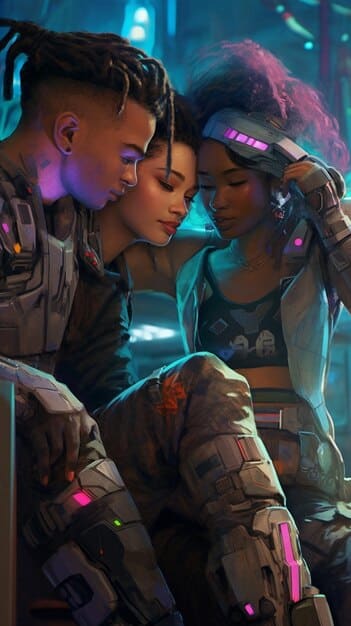
The implicit approach allowed for a wide range of interpretations, yet simultaneously left much to be desired in terms of genuine visibility and validation for LGBT players.
Explicit LGBT Representation: Characters and Story Arcs
The inclusion of explicit LGBT characters marked a significant shift, bringing diversity to the forefront. This section examines character arcs and narratives contributing to or benefiting from LGBT representation.
Evaluating these stories offers insights into both positive impacts and areas which may lack in their execution of inclusivity.
Champion Spotlight: Varus and His Narrative
Varus, initially centered around themes of vengeance, later incorporated a narrative featuring two male lovers whose essence merged with the Darkin bow, thus changing the character.
This storytelling approach garnered mixed reactions, as some celebrated the inclusion while others critiqued the fact homosexuality was tied to conflict and transformation.
- Complex Integration: Integrating same-sex relationship deeply into Varus's identity enhanced narrative complexity.
- Backlash on Representation: Some criticism highlights the association of the relationship with a transformative, potentially negative force.
- Potential Improvements: Addressing the trope that equates queerness with suffering or alterations could improve future narratives.
Other Notable Examples
Several other champions offer varying levels of LGBT representation, ranging from lore confirmations to specific interactions and character designs.
Each instance offers an opportunity to assess the impact of different storytelling techniques.
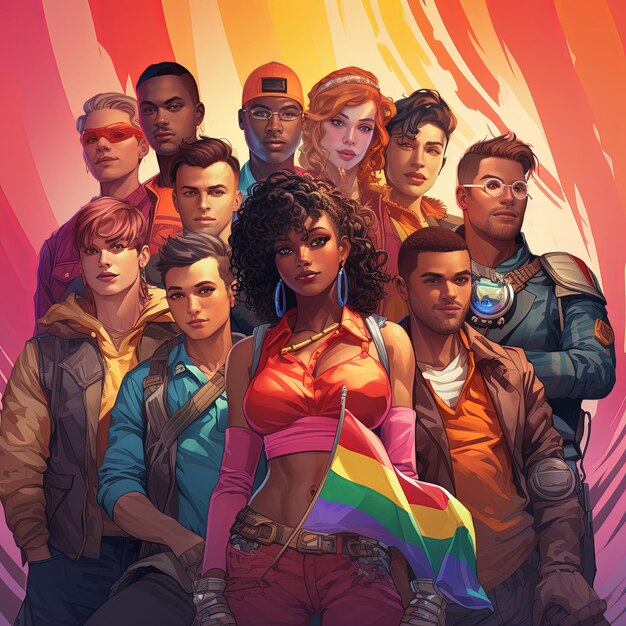
The incorporation of LGBT characters creates a more inclusive environment, but their storylines need care to avoid perpetuating harmful stereotypes.
Community Reactions and Engagement in the US
The unveiling of LGBT characters spurred extensive discussions within the US League of Legends community. From fan content to broader discourse, analyzing these reactions provides a comprehensive view of the topic’s impact.
Community responses often echo sentiments mirrored in larger societal debates on identity and inclusivity.
Fan Content and Interpretation
Fan fiction, art, and forums dedicated to League of Legends actively explore and expand upon LGBT themes within the game.
This creative expression provides marginalized groups with narratives to engage with on their own terms.
Constructive Criticism and Advocacy
The LGBT community and allies have vocalized constructive feedback aimed at improving representation strategies within Riot Games.
Advocacy extends to pushing for more diverse writers and storylines to ensure authentic depictions.
The collective engagement amplifies the call for greater authenticity, ultimately influencing game developers and narrative creators to be more mindful and inclusive.
Challenges of LGBT Representation in League of Legends Lore
Despite strides, developers encounter challenges related to the depth, breadth, and authenticity of LGBT portrayals. These challenges can impact both the acceptance and perception of characters.
Addressing these hurdles requires vigilance and a commitment to continuous improvement.
Stereotypes and Tokenism
One common pitfall for developers is using stereotypical tropes or including LGBT characters merely as a token gesture, void of genuine depth.
This can lead to criticism from the game player base who call out superficial integrations.
- Token Representation: Incorporating characters without giving them meaningful roles or stories.
- Stereotypical Depiction: Relying on outdated or harmful character tropes that can marginalize individuals.
- Limited Backstories/Lore: Failing to develop in-depth backgrounds or histories results in one-dimensional characterizations.
Avoiding these missteps requires proactive storytelling and a sensitivity to community concerns.
Balancing Representation with Gameplay
Another dilemma relates to the balance between representing diverse identities and preserving the core game mechanism, where competitive balance is supreme.
Developers must intertwine identities without disrupting gameplay mechanics.
The interplay of character, story, and gameplay is paramount to an authentic, immersive experience.
Positive Impacts on the US Gaming Community
The overt and nuanced LGBT representation within League of Legends has fostered a more inclusive US gaming community. Analyzing the tangible effects illuminates the positive ripple effects.
Increased visibility and acceptance can redefine perceptions within the broader esports ecosystem.
Fostering Inclusivity
LGBT representation contributes towards creating a gaming environment that is safe, supportive, and inclusive.
When players feel visible and appreciated, they become more invested in the community. This fosters belonging and overall happiness within the game.
Driving Social Change
The acknowledgment of LGBT identities in gaming can serve as a conduit for societal change, normalizing diverse experiences.
This is extremely pertinent where visibility remains limited by stigma or cultural norms.
The ripple effect extends to impacting understanding in broader society, as gaming becomes a source able to bridge gaps.
Future Directions for LGBT Representation in League of Legends
Looking ahead, the path forward involves deepening connections, refining storylines, and maintaining genuine engagement with LGBT players. Future implementations ought to build on lessons learned.
Continuous communication and feedback loops will be essential to refine strategies in future representations.
Enhanced Character Development
Future characters ought to have deeper, more complex stories that avoid relying on stereotypes. Their identity has the potential to intersect and not define their trajectory.
Crafting characters from a diverse and intersectional perspective strengthens their narrative value.
Increased Collaboration with LGBT Community
Engaging LGBT consultants, cultural advisors, and community leaders can enhance the authenticity and sensitivity of the depictions. Engagement amplifies the depth of insight, ensuring the story has substance.
The future path involves a collaborative approach, leveraging collective insights to enhance portrayals.
| Key Aspect | Brief Description |
|---|---|
| 🌈 Evolving Representation | From subtle hints to explicit inclusion of LGBT characters. |
| 💖 Varus’s Impact | Mixed reactions to linking homosexuality with transformation and conflict. |
| 🗣️ Community Engagement | Active fan interpretation and advocacy for better representation. |
| 🌟 Future Directions | Focus on deeper character development and collaboration with LGBT community. |
FAQ
▼
Initially, representation was subtle, relying on fan interpretations. Over time, League of Legends introduced explicit LGBT characters with more defined stories, responding to community calls for inclusivity.
▼
Reactions were mixed. Some celebrated the inclusive storyline, while others criticized the association of the male relationship with conflict and an overall negative transformation of the character.
▼
Challenges include avoiding stereotypes, preventing tokenism, and ensuring that LGBT narratives are authentic and integrated meaningfully into the characters’ backgrounds without overshadowing their primary roles.
▼
By increasing LGBT visibility, League of Legends creates a more welcoming environment. Representing diversity can prompt societal change and normalize different experiences, ultimately fostering acceptance and understanding in the gaming community.
▼
Future improvements involve crafting deeper, complex characters, avoiding harmful stereotypes, and working closely with LGBT consultants and community leaders to ensure the stories are both respectful and compelling.
Conclusion
Analyzing the representation of LGBT characters in League of Legends lore and their impact on the community in the US reveals an ongoing journey, marked by both successes and areas for further growth. As inclusivity evolves, continued dialogue and thoughtful character development can sustain positive impacts on the community.
